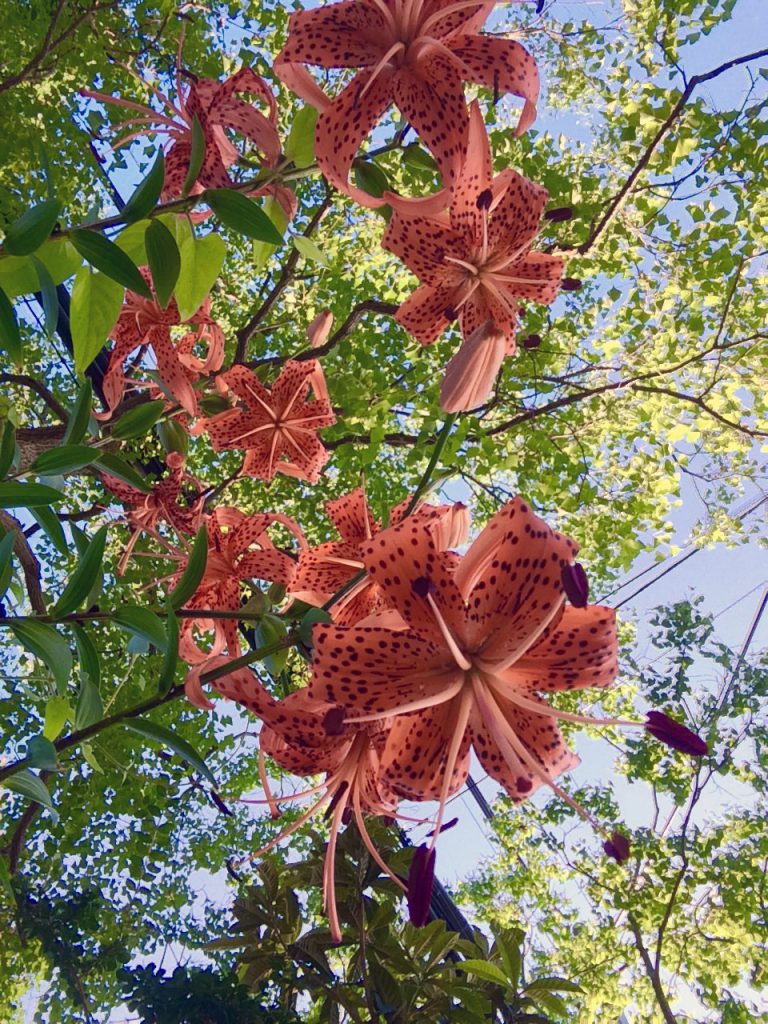
On a extremely hot day, Oniyuri(tiger lily) is energetically blooming, enduring the tropical nights. Only this area is really cool and so Oniyurithe is fine. The other day, it recorded 37.8 ℃ in Asahikawa, Hokkaido. The lowest temperature in the history of observation in Japan is -41.0 ℃, which was also observed in Asahikawa City, so it is surprising that the difference between the lowest temperature and the highest temperature is as much as 78.8 ℃. Also, the typhoon that landed for the first time this year is in Ibaraki prefecture, and the weather in Japan has changed from west to east until now, but recently it often changes from the east, so the weather environment in Japan has changed completely. If the weather environment changes, the growing environment of animals and plants will change, and the Saijiki(a haiku poet’s compendium of seasonal terms) will have to change. It is also the reason why haiku without seasonal words is popular.
猛暑日、熱帯夜を掻い潜って鬼百合が元気に花を開かせています。この辺りだけがやけに涼しく、鬼百合が元気なのもわかります。先日も北海道旭川市で37.8℃を記録したそうです。日本の観測史上の最低気温も旭川市で観測された-41.0℃ですから、最低気温と最高気温の差が78.8℃もある訳ですから驚きです。また今年初上陸した台風は上陸地は茨城県だし、日本の天気は西から東にと変化するのが今まででしたが、最近は東から変わることもしばしばという事ですから、日本の気象環境はすっかり変わりました。気象環境が変われば動植物の成育環境も変わり、俳句の歳時記も変えざるえません。季語無しの俳句が流行する由縁でもあります。
